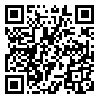Volume 15, Issue 57 (2022)
LCQ 2022, 15(57): 181-236 |
Back to browse issues page
Download citation:
BibTeX | RIS | EndNote | Medlars | ProCite | Reference Manager | RefWorks
Send citation to:



BibTeX | RIS | EndNote | Medlars | ProCite | Reference Manager | RefWorks
Send citation to:
Ameli Rezaei S M. Analysis of Scientific Papers on Archetypic Criticism in Epic Genre During the 2010s. LCQ 2022; 15 (57) :181-236
URL: http://lcq.modares.ac.ir/article-29-61919-en.html
URL: http://lcq.modares.ac.ir/article-29-61919-en.html
Associate Professor, Institute of Humanities and Cultural Studies , m_rezaei53@yahoo.com
Abstract: (1339 Views)
Archetypic criticism is an approach which has had considerable development in writing the scientific papers in recent decades. It is mostly used in literary studies and is interconnected to the literature. Designed by a research plan, this paper studies the archetypic criticism in Iran discussed in literary criticism in the academic papers related to the epic genre, and analyzes the discourse of archetypic criticism, its repetitive elements and also the development of such elements in papers. It starts by reviewing the works of effective individuals on introducing archetypic criticism, its discourse, its historical and thematic developments in epic genre, employing a descriptive- analytical method. Interdisciplinary studies have focused on archetypic approach since the 1960s. In the 1980s and 1990s, many authors especially those who are now well-known in this field, opened a new way in studies of archetypic criticism. The dominance of content analyses, comparative reading and discovering the meaning, are some considerable specifications of papers of this period. During the 2010s many academic papers were published on this matter and the current paper has investigated their structure and method.
Extended Abstract
Archetypic criticism is an approach which has been considerably developed in recent decades. This type of criticism is mostly used in literary studies. Derived from the research plan, this paper studies and analyzes the archetypic criticism in Iran in academic papers related to the epic genre, and analyzes the discourse of archetypic criticism, its repetitive elements and also the development of such elements in papers. As already mentioned, Studies on Shahnameh [The Book of Kings] were mostly shaped by orientalism at the beginning of the century. Following nationalism and the establishment of new concepts such as government- people, epic studies and especially works focusing on Shahnameh, expanded in an extensive form. Before the 1950s, they were mostly related to the content analyses, vocabulary and linguistic studies, and so they could be considered as historical and sociological introductions to Shahnameh. From the 1950s/1960s, psychological and mythological studies in literary studies were introduced to the field. At first, papers and books on Shahnameh, written at the beginning of the century, were reviewed and then papers on archetypic criticism of epic genre from the 1990s were studied. The style of writing has seemingly changed during the 2000s and 2010s. Scientific research journals provide an academic requirement for essay writing with the predetermined methodologies. Many academic papers were produced within these two decades. Their main structure was studying the details, choosing two or more elements and trying to employ the theory in the context. As observed in many papers, this approach has both advantages and disadvantages. In the 2000s, attention has been given to visual specifications and natural elements in myths but in the 2010s, the characters were related to more complicated definitions of archetypic criticism such as shadow, persona and perfection of hero. Travel, rebirth and decorum patterns are apparently the most significant ones in this period.
Extended Abstract
Archetypic criticism is an approach which has been considerably developed in recent decades. This type of criticism is mostly used in literary studies. Derived from the research plan, this paper studies and analyzes the archetypic criticism in Iran in academic papers related to the epic genre, and analyzes the discourse of archetypic criticism, its repetitive elements and also the development of such elements in papers. As already mentioned, Studies on Shahnameh [The Book of Kings] were mostly shaped by orientalism at the beginning of the century. Following nationalism and the establishment of new concepts such as government- people, epic studies and especially works focusing on Shahnameh, expanded in an extensive form. Before the 1950s, they were mostly related to the content analyses, vocabulary and linguistic studies, and so they could be considered as historical and sociological introductions to Shahnameh. From the 1950s/1960s, psychological and mythological studies in literary studies were introduced to the field. At first, papers and books on Shahnameh, written at the beginning of the century, were reviewed and then papers on archetypic criticism of epic genre from the 1990s were studied. The style of writing has seemingly changed during the 2000s and 2010s. Scientific research journals provide an academic requirement for essay writing with the predetermined methodologies. Many academic papers were produced within these two decades. Their main structure was studying the details, choosing two or more elements and trying to employ the theory in the context. As observed in many papers, this approach has both advantages and disadvantages. In the 2000s, attention has been given to visual specifications and natural elements in myths but in the 2010s, the characters were related to more complicated definitions of archetypic criticism such as shadow, persona and perfection of hero. Travel, rebirth and decorum patterns are apparently the most significant ones in this period.
Article Type: Original Research |
Subject:
Mythical Criticism
Received: 2022/05/31 | Accepted: 2022/07/1 | Published: 2022/07/1
Received: 2022/05/31 | Accepted: 2022/07/1 | Published: 2022/07/1
Send email to the article author
| Rights and permissions | |
 |
This work is licensed under a Creative Commons Attribution-NonCommercial 4.0 International License. |









